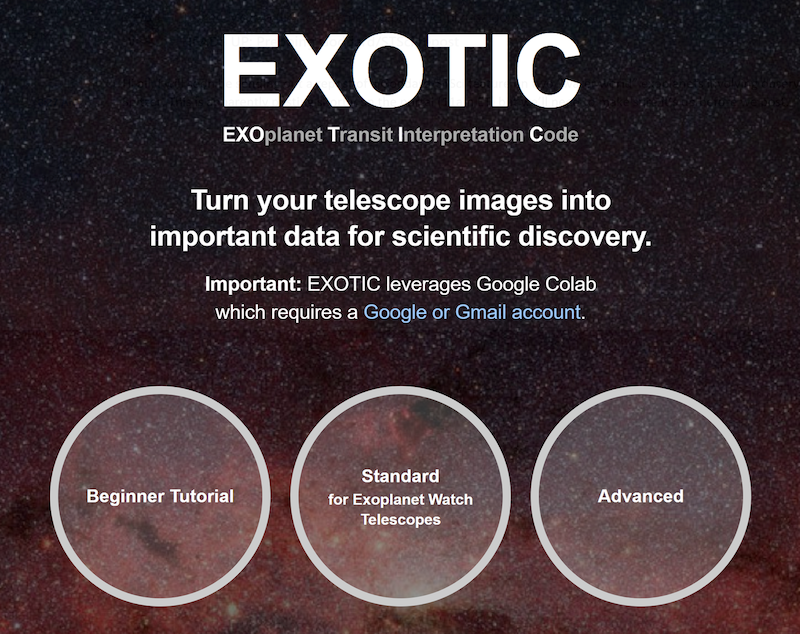
Astronomers have discovered over 5,000 confirmed exoplanets so far, along with many other candidates awaiting confirmation. Scientists expect thousands more discoveries in the coming months and years. And now, NASA wants you to join in the search! You can use your own telescope or even your smartphone to help study and detect exoplanets. The project, called Exoplanet Watch, is a unique way for the public to help astronomers study and find distant new worlds.
The Exoplanet Watch project
Exoplanet Watch is a citizen science project managed by NASA’s Jet Propulsion Laboratory (JPL), part of NASA’s Universe of Learning program. It began in 2018, but now it is even better and more easily available to the public at large. Anyone can take part. As Rob Zellem, creator of Exoplanet Watch and an astrophysicist at Jet Propulsion Laboratory, said:
With Exoplanet Watch you can learn how to observe exoplanets and do data analysis using software that actual NASA scientists use. We’re excited to show more people how exoplanet science is really done.
Participants in Exoplanet Watch use the EXOplanet Transit Interpretation Code (EXOTIC) software. The project website includes helpful tutorials and guides to get you started.
Using your own telescope to help NASA study exoplanets
There are two ways you can assist with Exoplanet Watch. The first involves using your own telescope if you have one. There is no size limit to what telescope you can use, although a larger telescope can see more targets. Even a small six-inch (15-cm) telescope could detect planet transits around some nearby stars. A transit is when a planet passes in front of its star, as seen from Earth. This causes a small but measurable temporary decline in brightness of the star.
A great aspect of Exoplanet Watch is that it uses observations of the same targets from multiple people. This combination of data helps to obtain more accurate measurements. It is also ideal for exoplanets with long transit periods. That is, if the transit lasts longer than the time the star is visible to a single observer. Now, observers from around the world can help track the transit at the same time. For example, 20 participants watched the transit of the exoplanet HD 80606 b.
NASA’s Webb telescope will also observe that exoplanet later this year. But now, Webb will have about two extra hours of observing time, thanks to the observations that the Exoplanet Watch members already did. The refining of the transit measurements that Exoplanet Watch already completed now frees up additional time for Webb to observe other targets.

No telescope? Use your smartphone!
Even if you don’t have a telescope, you can still take part in Exoplanet Watch. You can use your smartphone to download the data – 10 years’ worth so far – and help look for exoplanet transits. While the data can reveal new planets, Exoplanet Watch members mostly look at data from planets already discovered. This helps astronomers learn more about those planets’ orbits.
In addition, Exoplanet Watch participants will look for any other variations in the brightness of the stars. Flares and star spots (solar flares and sunspots on our own sun) can cause such variations. They also affect the observations of any planets orbiting the stars. For example, they can make the planet seem smaller or larger than it really is. Variations like these, therefore, need to be taken into account when measuring the characteristics of any planets.
Exoplanet Watch is a great way for the public to assist astronomers in one of the most exciting fields in science today. As Zellem noted:
I hope this program lowers barriers to science for a lot of people and inspires the next generation of astronomers to join our field.
Bottom line: Do you want to help NASA study exoplanets? Now you can, with the Exoplanet Watch citizen science project. All you need is a telescope or a smartphone.











